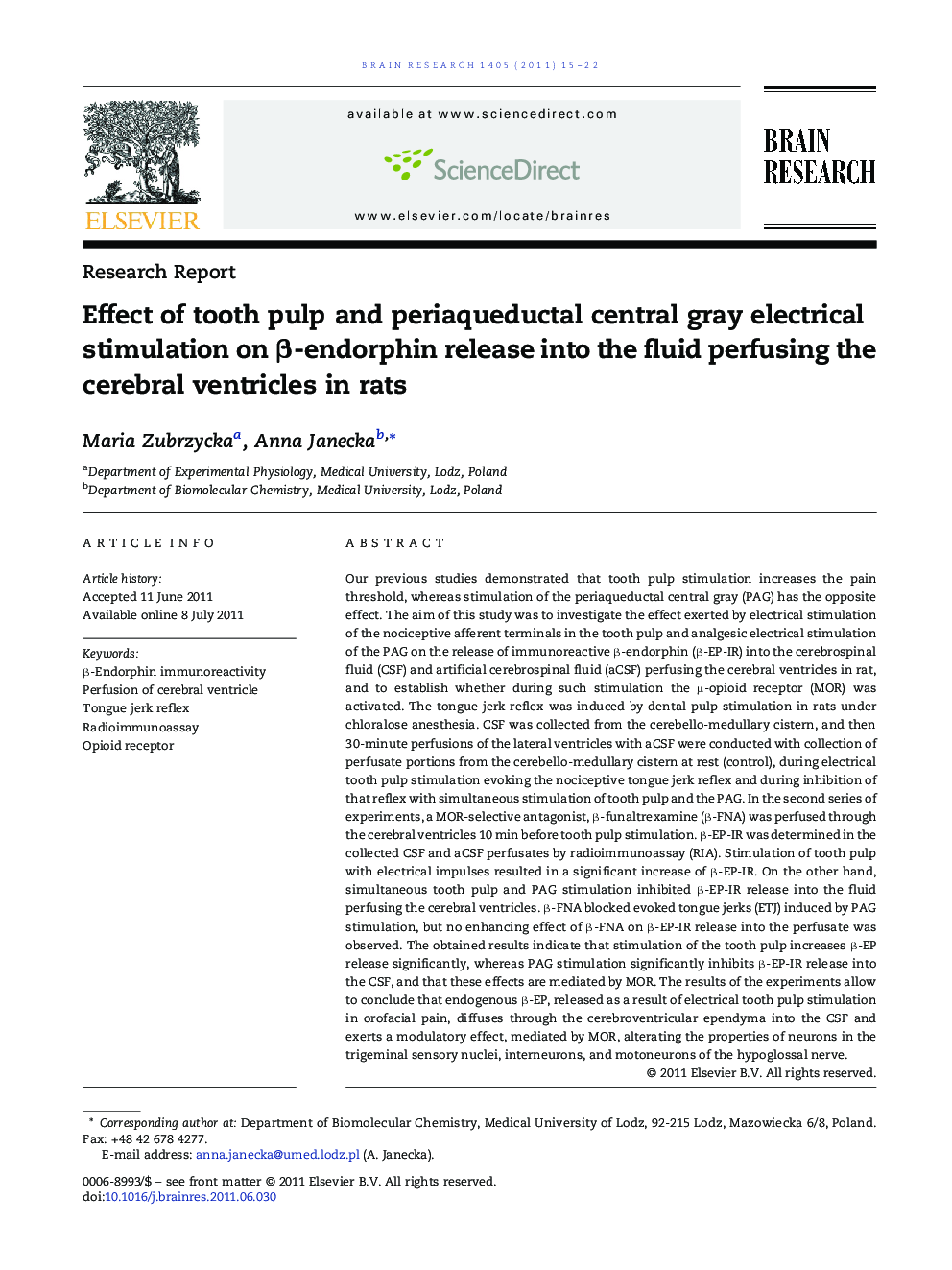| کد مقاله | کد نشریه | سال انتشار | مقاله انگلیسی | نسخه تمام متن |
|---|---|---|---|---|
| 6264777 | 1614034 | 2011 | 8 صفحه PDF | دانلود رایگان |

Our previous studies demonstrated that tooth pulp stimulation increases the pain threshold, whereas stimulation of the periaqueductal central gray (PAG) has the opposite effect. The aim of this study was to investigate the effect exerted by electrical stimulation of the nociceptive afferent terminals in the tooth pulp and analgesic electrical stimulation of the PAG on the release of immunoreactive β-endorphin (β-EP-IR) into the cerebrospinal fluid (CSF) and artificial cerebrospinal fluid (aCSF) perfusing the cerebral ventricles in rat, and to establish whether during such stimulation the μ-opioid receptor (MOR) was activated. The tongue jerk reflex was induced by dental pulp stimulation in rats under chloralose anesthesia. CSF was collected from the cerebello-medullary cistern, and then 30-minute perfusions of the lateral ventricles with aCSF were conducted with collection of perfusate portions from the cerebello-medullary cistern at rest (control), during electrical tooth pulp stimulation evoking the nociceptive tongue jerk reflex and during inhibition of that reflex with simultaneous stimulation of tooth pulp and the PAG. In the second series of experiments, a MOR-selective antagonist, β-funaltrexamine (β-FNA) was perfused through the cerebral ventricles 10 min before tooth pulp stimulation. β-EP-IR was determined in the collected CSF and aCSF perfusates by radioimmunoassay (RIA). Stimulation of tooth pulp with electrical impulses resulted in a significant increase of β-EP-IR. On the other hand, simultaneous tooth pulp and PAG stimulation inhibited β-EP-IR release into the fluid perfusing the cerebral ventricles. β-FNA blocked evoked tongue jerks (ETJ) induced by PAG stimulation, but no enhancing effect of β-FNA on β-EP-IR release into the perfusate was observed. The obtained results indicate that stimulation of the tooth pulp increases β-EP release significantly, whereas PAG stimulation significantly inhibits β-EP-IR release into the CSF, and that these effects are mediated by MOR. The results of the experiments allow to conclude that endogenous β-EP, released as a result of electrical tooth pulp stimulation in orofacial pain, diffuses through the cerebroventricular ependyma into the CSF and exerts a modulatory effect, mediated by MOR, alterating the properties of neurons in the trigeminal sensory nuclei, interneurons, and motoneurons of the hypoglossal nerve.
⺠Stimulation of tooth pulp increases β-endorphin level in the cerebrospinal fluid. ⺠Stimulation of PAG decreases β-endorphin level in the cerebrospinal fluid. ⺠MOR antagonist does not influence β-endorphin release caused by PAG stimulation.
Journal: Brain Research - Volume 1405, 8 August 2011, Pages 15-22